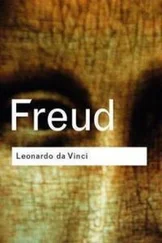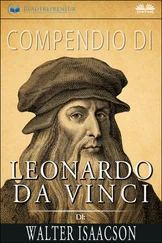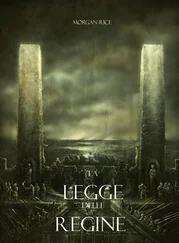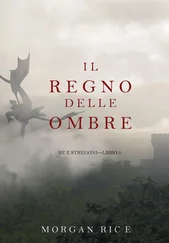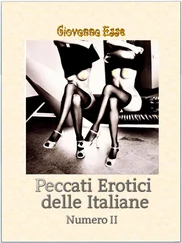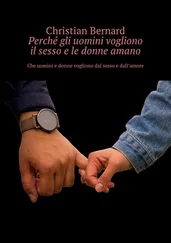In his last will, Leonardo decided, surprisingly, to be buried in the church of Saint-Florentin at the castle of Clos Lucé. In France, therefore, and not in Florence, as his friends and students expected. Here, where he had last conducted the renovation work in the castle of Amboise, he wanted to find eternal rest. Certainly this decision was dictated by the bitterness and sense of abandonment he felt towards the Lords of Florence. The Medici family had made him great once, but in the end also "destroyed" him, as he had noted in his diary. Perhaps Leonardo's decision to be buried in France was also a concession to the King of France, who had welcomed him so kindly in recent years, and supported him with a truly princely apanage. Perhaps the place of his funeral was part of the agreement that Leonardo had met with King François I erbefore making his last trip to France. But why did he want to be buried in this church? What did the church of Saint-Florentin at the Clos Lucé castle mean to the artist? The name could derive from "Virgin Lucis", translated as "Virgin of Light". Was it perhaps the Madonna that Leonardo painted to fulfill his role as the first court painter? It is also assumed that the fresco in the chapel of Anne de Bretagne, on the ground floor, was probably painted by his pupil Francesco de' Melzi. Like many things in the life of the universal genius, these are only hypotheses. Because Leonardo was already suffering from illness at that time and was no longer able to paint. The church is located a few hundred metres from Amboise Castle and notes show that Leonardo felt that the environment was a jewel of nature and a delight for his senses.
The question of the funeral, which worried Leonardo now on his deathbed, remained. It was his last staging that concerned him closely and nothing should go wrong. The incomparable master of ceremonies, however, this time as his client, in addition to surprising those present, wanted to send a final message to posterity. He wanted to leave the stage of life as he had lived it. How was the funeral to be celebrated? Like a funeral or more like a party? Unbridled, thoughtful or sad like life itself? He was very conflicted about it. Leonardo had organized several sparkling parties for his aristocratic contractors, with which he was happy, surprised and enchanted. Everyone was very impressed, because they were amazed by the dramaturgy and the surprise effects. At his last party, which saw him as the undisputed protagonist, everything had to work as cohesive as possible and be suitable for his character: he had to be generous, simple and modest. It was a flashy reflection of his character, the worthy conclusion of his lively life. Leonardo established that 60 "beggars" with a candle in their hands should follow the funeral procession and that the funeral was to be organized by Franciscan friars and beggars. Even in this difficult time Leonardo demonstrated his talent and love for staging and symbolism. Because the number 60 is full of symbolic meaning: on 60 pearls we speak of the Rosary of the Virgin Mary. The number 60 is synonymous with heaven, it is mentioned in the Bible 32 times. The number also indicates the global karma of the universe and divine providence in general. Leonardo remained mysterious until his death. He also established that three solemn masses should be celebrated, a perfect number, and should be read after his death by deacons and subdeacons. But this is not enough. Thirty other "inferior" masses in Saint-Grégoire, in Saint-Denis and in the church of the beggars were to be read in his memory. A farewell ceremony, scenic and evocative, that had to reflect the way in which he had dealt with his whole life. Did Leonardo, who had always considered himself an atheist, want to make peace with God? Was this the inescapable sign that he had repented of his actions on his deathbed and now asked God's forgiveness for his "crimes"?
But what worried him most was his legacy, the fate of his estate and his codes: not only his paintings, but his discoveries, his archives, his treatises and his inventions. Copying in a certain sense his father's profession, which was a notary, Leonardo felt like a notary of nature, life and the visible world, noting down and commenting on everything he saw and studied. Who was responsible for his spiritual legacy? Who should have guarded it? Fortunately, there was the docile Francesco de' Melzi, who loved deeply and perhaps also a little passionately. Leonardo loved his goodness and sweetness, knowing that he could count on him. So it was no surprise that Leonardo appointed Francesco de' Melzi as executor of the will. Leonardo entrusted him with all his books, the important Codex Atlanticus and other instruments and Portracti for art and painting. In addition, his drawings and part of his sumptuous wardrobe. He knew that he would give his heritage in reliable hands. And the beloved and sometimes hated master student Gian Giacomo de’ Caprotti, who was missing at this time? Of all people would he be relatively excluded from the legacy? Would he feel betrayed, bequeathed - after a 27-year loyalty and cooperation? Why had Gian Giacomo been punished after Leonardo's death in the opinion of many? Did the young Count Francesco de' Melzi play an important role when it came to deciding to whom the master's inheritance should go?
However, there has never been an intrigue about Leonardo's legacy. Also because Leonardo had settled the whole question of his inheritance to the satisfaction of all. Salaj had been paid royalty the year before for his faithful services. In 1518 Leonardo had sold to the French king the three paintings he had brought from Italy to France and which the king so desired. Among these there was also the famous Mona Lisa. Leonardo received 1250 Italian Scudi for these paintings, which he deposited into an account in Milan and then the portrait was collected by Salaj. The French note written by the financial secretaries of King François I er, found in the nineties of the last century, allows this conclusion: "A messire Salay de Pietredorain, paintre, pour quelques tables de paintures qu'il a baillèes au Roy, II, mVIcIIIIl. t. IIIs. IIIId. (2604 livres 3 sols 4 denier tournois)." In addition, Gian Giacomo de’ Caprotti received not only Leonardo's precious collection of gems, but also his perhaps most dazzling clothing left by the master in Milan. These were the festive accessories of an eccentric, vain and fashionable man who liked to show his sense of art and his finesse even in his daily wardrobe. Leonardo's greatest pride was the three jackets made with precious fabrics that he wore only on special festive occasions: a purple damask, a black goblet and a black silk taffeta.
Leonardo also did not forget the little maid Mathurine, who had cooked exquisitely since 1517 according to vegetarian instructions. The faithful maid received Leonardo's linen and two golden ducats. Even the Florentine half-brothers and stepsisters were considered in Leonardo's last will. He bequeathed to them his estates at Fiesole and 400 golden Scudi, which he had deposited at the end of his first period in Milan at Santa Maria Nuova in Florence. Even at the point of death, Leonardo once again proved his unprecedented magnanimity, even towards his half-brothers. Leonardo was not touchy. Yet years earlier, after the death of his father Piero and his uncle Francesco some years later, he had felt a certain disappointment for having been excluded from his father's inheritance by his half-brothers. Then the French king Louis XII himself had sent a letter to the government of the city of Florence, trying to influence the judgment of the Florentine court in favour of Leonardo. The royal letter had no effect. In the end, Leonardo lost his trial and was formally excluded from his father's inheritance. But the bitterness he felt for this negative outcome did not last long and soon removed those miserable family intrigues.
Читать дальше

